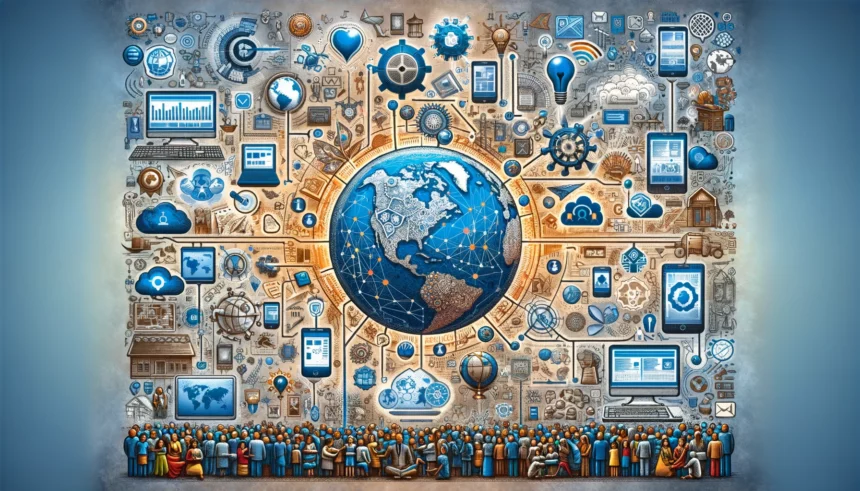Listen to the article now:
In an age where technology pervades every aspect of our lives, it has become a pivotal force in the way cultures are transmitted and preserved, as well as how we communicate and form relationships. This digital revolution is not just reshaping our present and future but is also a powerful tool in keeping the past alive, ensuring that the rich tapestry of global cultures is accessible to everyone, anywhere, at any time.
The Digital Preservation of Culture
The preservation of culture in the digital age has been transformative, to say the least. Gone are the days when cultural artifacts, stories, and traditions were confined to the physical realms of museums, libraries, and personal collections. Today, digital platforms and the internet have democratized access to these cultural treasures, allowing them to be shared with a global audience. Websites, social media, and online archives have become the new custodians of cultural heritage, offering a space where the intangible aspects of culture — the stories, dances, music, and rituals that define a community — can be documented and preserved for posterity.
This digital documentation does more than just preserve; it breathes life into these artifacts, allowing them to be actively engaged with. Through interactive websites, virtual tours, and digital exhibitions, individuals can not only view these cultural pieces but also learn about their history, significance, and the context in which they were created. Technology, in this sense, serves as a bridge between the past and the present, ensuring that cultural heritage is not just remembered but is also a living, breathing part of our contemporary world.
The Transformation of Communication and Social Interaction
The way we communicate and interact with each other has undergone a seismic shift thanks to advancements in communication technology. Social media platforms, messaging apps, and video conferencing tools have all played their part in erasing geographical barriers, making it possible for people from different corners of the world to connect in real-time. This global connectivity has paved the way for cross-cultural communication on an unprecedented scale, enabling people to share experiences, ideas, and collaborate in ways that were unimaginable just a few decades ago.
Moreover, this digital connectivity has given rise to virtual communities — spaces where individuals, regardless of their physical location, can come together based on shared interests, goals, or cultural backgrounds. These communities offer a sense of belonging and connection that transcends physical boundaries, fostering meaningful relationships and a sense of global unity. Whether it’s through shared interests in art, music, gaming, or cultural heritage, these digital platforms have become the new public squares, where voices from across the globe can be heard, shared, and celebrated.
Conclusion
The impact of technology on cultural transmission, preservation, and communication is profound and far-reaching. By making cultural heritage more accessible and facilitating global connectivity, technology has not only transformed the way we interact with our past but also how we connect with each other in the present. It reminds us that despite our diverse backgrounds and stories, we share a common human experience, one that is enriched, not diminished, by our differences. In this digital era, as we navigate the complexities of preserving our cultural legacies and building new forms of communication, it’s clear that technology will continue to play a crucial role in shaping our shared future.
















